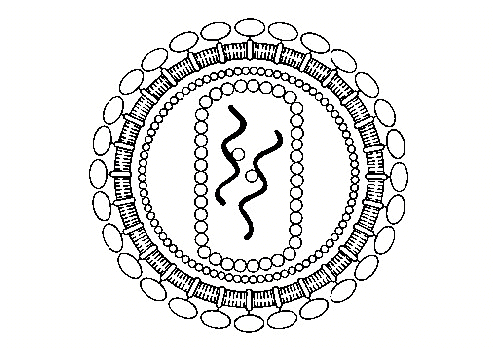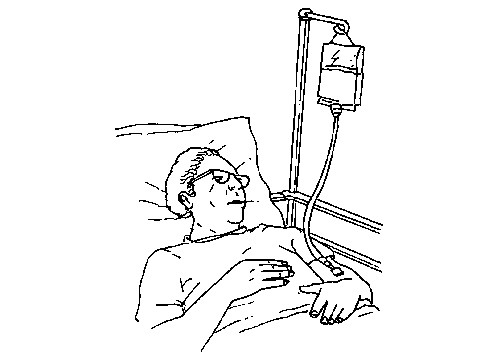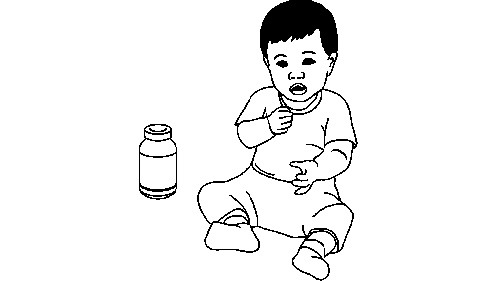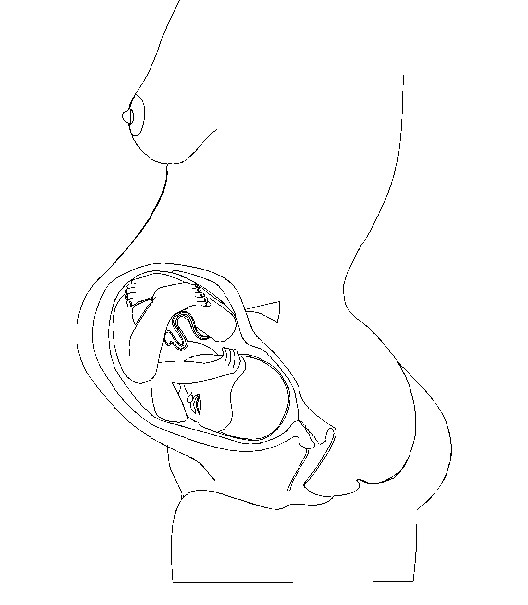

International
Labour Organization
 Your
health and safety at work
Your
health and safety at work
AIDS AND THE WORKPLACE
Goal of the Module
This Module provides trainees with basic information that is known at this time on the acquired immunodeficiency syndrome (AIDS), including why it is a trade union issue. The Module also contains information on how the human immunodeficiency virus (HIV), the virus that causes the disease, is transmitted and how it is not transmitted, methods of prevention and policy issues. The question of discrimination in the workplace is discussed as well as the role of the health and safety representative in dealing with HIV/AIDS-related issues in the workplace.
Objectives
 |
At the end of this Module, trainees will be able to: (1) describe the three ways in which HIV is presently known to be transmitted; (2) suggest several methods of preventing exposure to HIV; (3) state several reasons why AIDS should be considered as a trade union issue. |
What is in this Module
Note: If you find some of the terms used here new to you or medical in nature, please check the Glossary at the back of this Module for definitions.
No matter where you work or live, you need to know about AIDS
Many workers around the world know something about AIDS. However, you may still have many questions. Since work plays such an important role in most people's lives, it is only natural that many of these questions centre around the workplace. This Module contains information from the World Health Organization (WHO) and the International Labour Office (ILO) — the leading authorities in the world on health and labour, respectively. These are the facts, as they are known today, that workers, trade unions, employers and their families and friends must know about AIDS in order to help prevent this disease.

A. Level of the problem worldwide
AIDS was first recognized in the early 1980s and has now become a worldwide problem. As of 30 June 1995, more than one million cumulative AIDS cases had been reported to the World Health Organization (Global Programme on AIDS) since the onset of AIDS. All groups, races and communities can be affected by AIDS because the virus that causes it can cross any boundary - geographical, political or social.
It is estimated by the World Health Organization (WHO) that as of mid-1995, around 18.5 million adults and more than 1.5 million children, have been infected with the HIV virus since its recognition (late 1970s to early 1980s). For the year 2000, the WHO currently projects a cumulative total of 30-40 million HIV infections in men, women and children, of which more than 90 per cent will be in developing countries.
Estimated distribution of total adult HIV infections from late 1970s/early 1980s until mid-1995 |

| Source: WHO | Global Total: 18.5 Million |
In developing countries, AIDS is already affecting and will continue to affect that section of the population which is made up of people who are in their economically and socially most active years, with family members who are dependent on them — that is, the working sector of the population. According to the United Nations Development Programme, many of these countries face the loss of complete generations of people within their communities and the devastation of their productive workforce. Moreover, this disease is seriously endangering the long-term goals of societies, particularly the fight against poverty and discrimination, the promotion of democracy and the protection of workers.
 |
|
|
|
II. Why AIDS is a trade union issue
All over the world the labour movement has long been in the forefront of the historic struggles to eliminate prejudice and discrimination from the workplace, to establish safe and healthy working conditions, and to provide basic health care and social insurance for all workers. The AIDS pandemic threatens each of these objectives.
HIV/AIDS is a disease that does not discriminate. It is found in every age group and race, in men and in women. Although the disease cannot be spread by casual contact, there may be prejudice and fear both at work and outside the workplace, and workers with HIV/AIDS may face discriminatory attitudes and practices from both employers and co-workers. Workers with HIV/AIDS therefore need emotional support as well as practical support from their unions.
In the vast majority of occupations and occupational settings, work does not involve a risk of becoming infected with HIV. However, HIV/AIDS is a health and safety issue for those workers who do risk exposure at work (see section IV).
For a union member with HIV/AIDS, it is important that the union try to protect the worker's access to medical benefits and right to remain at work as long as he or she is physically able. The union can make a difference in the AIDS crisis. Your local union's response to AIDS in the workplace can help bring about greater understanding or greater fear, greater safety or greater risk.
Successfully resolving workplace AIDS problems involves the same union principles and skills that you use to solve any other workplace problem. The struggle to protect members' rights when they are ill is no different from any other union struggle. It requires educating yourself and others, building determination to defend members' rights, and compassion.
Unions should become involved when discrimination or benefit problems arise. These decisions should not be left to management. A management that violates a contract and stretches the rules to penalize a worker with HIV infection or AIDS may feel free to violate the rights of other workers when handling other issues. When dealing with cases of discrimination, outside agencies can often be helpful, but they are no substitute for real, active union involvement.
Some local unions have had great success in dealing with the problems resulting from AIDS. Out of these struggles, they have sometimes built a stronger and more active union.
 |
|
|
|
Source: AIDS Facts & Hopes, edited by Pr. Luc Montagnier, The new update by Institut Pasteur, International English edition, Paris, 1991.
The first virus responsible for AIDS to be isolated (HIV1) is an extremely small particle (1 ten thousandth of a mm.). |
 |
AIDS is a disease caused by destruction of the immune system by a virus called HIV.
This virus is principally transmitted by sexual secretions and blood. For this reason, the two predominant modes of transmission at the present time are: penetrative sexual relations (homo- and heterosexual) and the sharing of contaminated syringes by injecting drug users.
What does AIDS mean? |
||
A |
Acquired: |
not hereditary but due to an (acquired) virus encountered by the patient during his or her lifetime |
I |
Immuno: |
|
D |
Deficiency: |
|
S |
Syndrome: |
the group of manifestations (symptoms) that characterize a disease |
In French SIDA: |
Syndrome d'Immunodéficience Acquise |
|
Although some of the medical terms about AIDS may be unfamiliar to you, it is important to know the facts. AIDS is caused by a virus named the human immunodeficiency virus (HIV). The virus enters the body through the blood and usually attacks a specific type of white blood cell (called the T-helper cell). When HIV attacks this cell, the body loses its ability to fight diseases that would only rarely affect a healthy person. AIDS is the late stage of infection with HIV. Among the illnesses often found in people with AIDS are certain types of pneumonia, other infections and cancer.
There may be a long period between the time a person is infected and the time he or she begins to get sick. Most people who become infected, however, will eventually get sick. (Members infected with HIV may, of course, need help from the union even before they start to get sick.)
People infected with the HIV virus including those who do not yet have any symptoms of AIDS, can give the HIV infection to their sex partners, to anyone with whom they share contaminated needles (e.g. when injecting drugs), or, in the case of pregnant women, to their unborn child.
Here are four important facts that everyone should know: |
|
How do you get HIV?
For HIV to be spread (transmitted), infected blood, semen or vaginal secretions of an infected person must enter the bloodstream of another person. The virus is dangerous once it is in the bloodstream. However, outside the body, the virus is very fragile and is easily “killed” when it is exposed to heat, light and common cleaners like household bleach. It is not, however, killed by cold.
There are three main ways that HIV is known to be transmitted
1. Sexual intercourse
HIV can spread by sexual intercourse, both heterosexual (man to woman or woman to man) and homosexual (man to man). It is most commonly transmitted when an HIV-infected person's semen or vaginal fluids come into contact with the partner's mucous membrane (the thin lining of the rectum, the vagina, the urethra and the mouth) during unprotected sexual intercourse (without a latex condom, also called a preservative) - anal, vaginal or oral.
2. Blood-to-blood contact
The virus can be spread by:
In most industrialized countries, all blood used in blood banks and hospitals and in the preparation of blood products is now screened for HIV, so there is little danger. In some developing countries where blood is not routinely or accurately screened, transfusion is still an important mode of transmission. HIV is not transmitted by donating blood provided sterile procedures are used.
3. Infected mother to unborn child
A mother who is infected with the virus can infect her child during pregnancy or delivery, and sometimes by breastfeeding.
Prevention
The AIDS virus is principally transmitted by sexual activity and via blood
| 1. | Prevention of sexual transmission |
The virus is present in high concentrations in semen, vaginal secretions and blood. Homosexual or heterosexual relations, with anal or vaginal penetration, carry a high risk of transmission of the HIV virus. Anal intercourse is associated with the highest risk. The presence of other sexually transmitted diseases (STD), responsible for genital lesions, may promote transmission of HIV. Oral contact with pre-ejaculatory fluid, semen or vaginal secretions carries a theoretical risk of transmission when there is one or several lesions inside the mouth. |
|
The very great majority of infected subjects became infected during sexual intercourse. The more traumatic the sexual relations, the greater the risk of injury and the greater the risk of transmission. Reducing the number of partners decreases the risk of being exposed, but having a single regular infected partner constitutes a high risk. |
 |
You must know your partners well |
“I like you, you like me, let's make love”. Now you must think twice. Having a sexual relationship with another person involves certain consequences which must be taken into consideration. It is therefore important to get to know your partner, to develop confidence in each other and to discuss the possibilities of previous infection or current sexual behaviour which could be a source of infection. |
There are many different forms of prevention |
With an infected partner or with any person in whom the risk of exposure is unknown, you should avoid vaginal or anal penetration or sharing any sexual objects and it is important to give each other pleasure by certain forms of safe sexual activity such as caressing or mutual masturbation. If you decide to have sexual intercourse with anal or vaginal penetration, it is important to always use a well lubricated condom. |
|
Having a sexual relationship with another person involves certain consequences which must be taken into consideration. |
 |
Use condoms
A condom is a rubber sheath that is rolled like a stocking onto the erect penis. There has been a great deal of progress in the manufacture of condoms, and they are now much thinner and much stronger than before.
 |
Condom in its sachet |
|
 |
With reservoir
|
|
 |
It is important to withdraw and remove the condom, holding it at its base, before complete loss of erection in order to avoid any leaking of semen. | |
 |
Putting on a condom just before sexual intercourse may be far from exciting, especially when you don't know how to go about it. A little bit of practice before and a little bit of humour during ill help to dissipate these difficulties rather than the erection. |
Condoms have been proven to reduce 2. Transmission by sharing contaminated needles and syringes |
The transmission of the AIDS virus by drug injections (syringes, needles, spoons and instruments necessary for the preparation of the drug) is another reason to avoid or to stop using intravenous drugs. If, however, you continue to use drugs or other injectable products :

Rinse and immerse the syringe or needle for 10-15 minutes in alcohol or dilute bleach solution and rinse again in water.
Place in boiling water for 10 to 15 minutes.
Introduce bleach solution into the syringe or needle. Repeat several times and rinse twice with clean water.
Do not accept acupuncture, mesotherapy or tattoos unless the needles are sterilized. Sharp beauty care instruments should be disinfected by heat or with an antiseptic before being used by another person. Hairdressers and manicurists must respect these basic rules of hygiene.
DON'T USE DRUGS, DON'T SHARE SYRINGES The AIDS virus can be avoided. Sexual transmission and sharing of syringes are the two major sources of transmission and preventive measures can be adopted for both of them. 3. Prevention of transmission by blood transfusion and injections of blood products |
Today, all blood is tested and the risk of HIV transmission is now very low, but cannot be considered to be non-existent. It must be remembered that blood transfusion is a vital procedure that is only performed when absolutely necessary. It would be absurd to refuse transfusion because of the minimal risk of transmission of HIV by transfusion.


Now that the AIDS virus can be killed by heat treatment of blood products, the risk of transmission to haemophiliacs and other patients should disappear.
| 4. | Transmission from the infected mother to her foetus |
Any woman who feels that she may have been infected should consult her doctor before becoming pregnant or as soon as possible after becoming pregnant. The risk of transmission from the infected mother to her child is between 20 and 50 per cent.

Continue to Section: There are many ways that HIV is not transmitted.